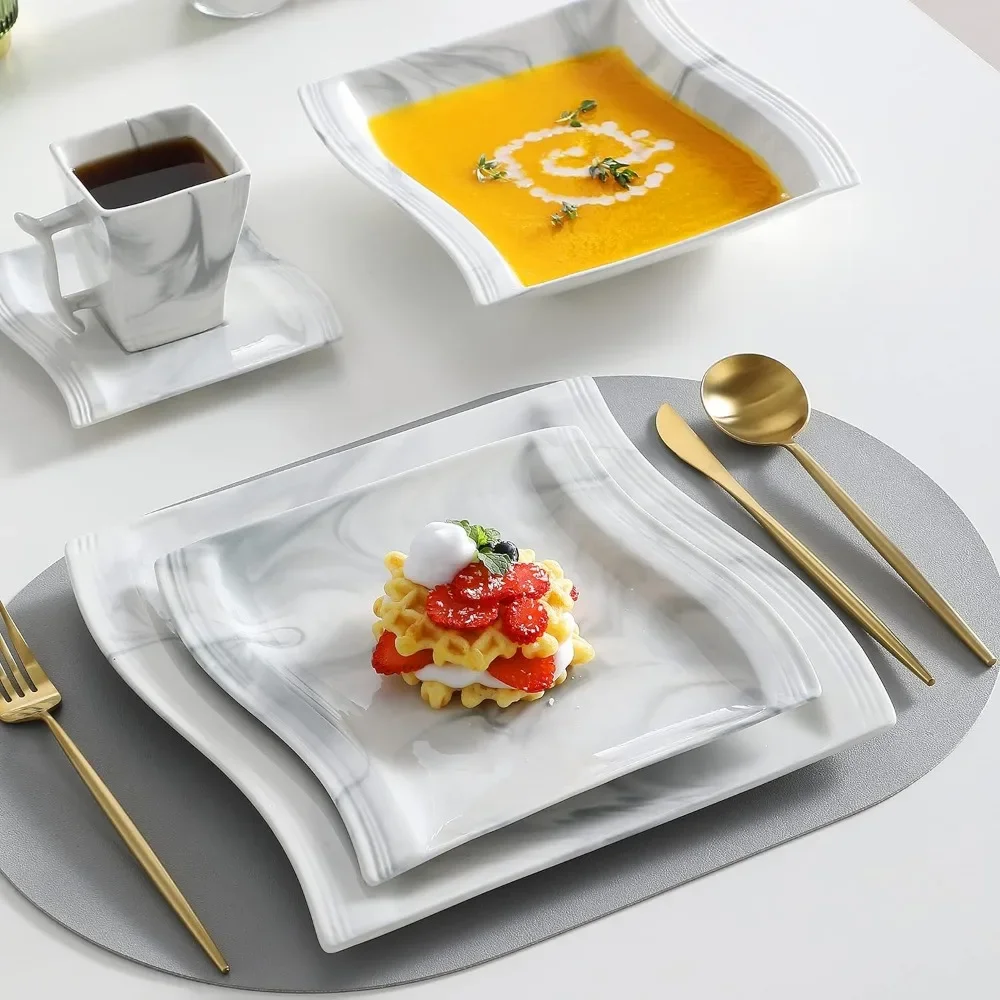
Introduction
Asian plates are more than just functional items for serving food; they are a blend of artistry, culture, and tradition. From the intricate designs of Chinese porcelain to the minimalist elegance of Japanese ceramics, each plate tells a story. This comprehensive guide delves into the different types, their cultural significance, materials, designs, and tips for selecting and using them in your home.
The Cultural Significance of Asian Plates
These hold a rich cultural significance and are deeply rooted in the culinary traditions of their respective regions:
- Chinese Plates:
- Historical Context: Chinese plates, particularly those made of porcelain, have been revered for centuries. The art of porcelain making dates back to the Tang Dynasty (618-907 AD) and reached its zenith during the Ming Dynasty (1368-1644 AD).
- Symbolism and Art: The intricate designs often depict traditional Chinese symbols such as dragons, phoenixes, and peonies, which represent prosperity, power, and beauty.
- Japanese Plates:
- Wabi-Sabi Aesthetics: Japanese plates often reflect the wabi-sabi philosophy, which finds beauty in imperfection and simplicity. This is evident in the asymmetrical shapes and natural glazes of many Japanese ceramics.
- Culinary Tradition: In Japanese cuisine, the presentation of food is as important as the taste. Plates are chosen to enhance the visual appeal of dishes, often reflecting the season or occasion.
- Korean Plates:
- Joseon Dynasty Influence: Korean plates, especially those from the Joseon Dynasty (1392-1910), are known for their understated elegance and practical design. White porcelain with subtle blue or green designs is a common style.
- Cultural Heritage: Korean plates often feature motifs such as plum blossoms, cranes, and clouds, symbolizing longevity, purity, and happiness.
- Other Asian Regions:
- Vietnamese Plates: Known for their vibrant colors and intricate patterns, Vietnamese plates often feature floral and geometric designs.
- Thai Plates: Thai ceramics, particularly Benjarong ware, are known for their elaborate hand-painted designs and bright colors.
Types of Asian Plates
Asian plates come in various shapes and sizes, each serving a specific purpose in the culinary traditions of their respective cultures:
- Dinner Plates:
- Chinese Dinner Plates: Typically larger with intricate designs, these plates are used for serving main courses and are often part of a larger dinnerware set.
- Japanese Dinner Plates: Often smaller and more minimalist, these plates are used for serving sushi, sashimi, and other main dishes.
- Side Plates:
- Dim Sum Plates: Used in Chinese cuisine for serving small portions of dim sum, these plates are usually small and decorated with traditional motifs.
- Appetizer Plates: In Japanese cuisine, side plates are used for appetizers and are often beautifully designed to complement the main dish.
- Soup and Noodle Plates:
- Chinese Soup Plates: These plates often have a deeper design to hold soups and broths, with accompanying spoons and chopsticks.
- Ramen Bowls: In Japanese cuisine, bowls are more commonly used for soups and noodles, but wide, shallow plates are also used for certain dishes like cold soba noodles.
- Dessert Plates:
- Mochi Plates: Small, delicate plates used in Japanese cuisine for serving mochi and other traditional sweets.
- Fruit Plates: In Chinese cuisine, small plates are often used for serving fresh fruits at the end of a meal.
Materials and Designs
The materials and designs of Asian plates are as diverse as the cultures they come from:
- Materials:
- Porcelain: Known for its durability and delicate appearance, porcelain is widely used in Chinese and Japanese dinnerware.
- Stoneware: Heavier and more rustic, stoneware is popular in Korean and Japanese ceramics, offering a warm, earthy appeal.
- Ceramic: Common in all regions, ceramic plates can range from simple, everyday use to highly decorative pieces.
- Lacquerware: Used in traditional Japanese and Vietnamese plates, lacquerware is known for its glossy finish and vibrant colors.
- Designs:
- Hand-Painted: Many Asian plates feature hand-painted designs, ranging from detailed scenes of nature to abstract patterns.
- Glazing Techniques: Japanese ceramics often use unique glazing techniques, such as raku and shino, to create natural and varied textures.
- Embossed and Etched: Some plates, especially in Chinese and Korean ceramics, feature embossed or etched designs that add a tactile element to the plate.
Choosing and Using Asian Plates
Selecting the right Asian plates for your home involves considering both functionality and aesthetic appeal:
- Purpose and Usage:
- Everyday Use: For daily meals, choose durable and easy-to-clean materials like stoneware or ceramic.
- Special Occasions: For formal dinners or special occasions, opt for intricately designed porcelain or lacquerware plates.
- Aesthetic Harmony:
- Match with Decor: Choose plates that complement your home decor and dining setup. Consider the colors, patterns, and overall style.
- Seasonal Themes: In Japanese tradition, plates are often selected to reflect the season, such as cherry blossom designs in spring or maple leaves in autumn.
- Care and Maintenance:
- Cleaning: Hand wash delicate and hand-painted plates to preserve their designs. Avoid harsh detergents and abrasive sponges.
- Storage: Store plates in a way that prevents chipping and scratching. Use plate separators or stack them with care.
Conclusion
Asian plates are more than just functional items; they are a celebration of culture, tradition, and artistry. By understanding the different types, materials, and designs, you can appreciate the beauty and significance of these plates and incorporate them into your dining experience. Whether you are serving a simple meal or hosting a formal dinner, these can add a touch of elegance and cultural richness to your table.


